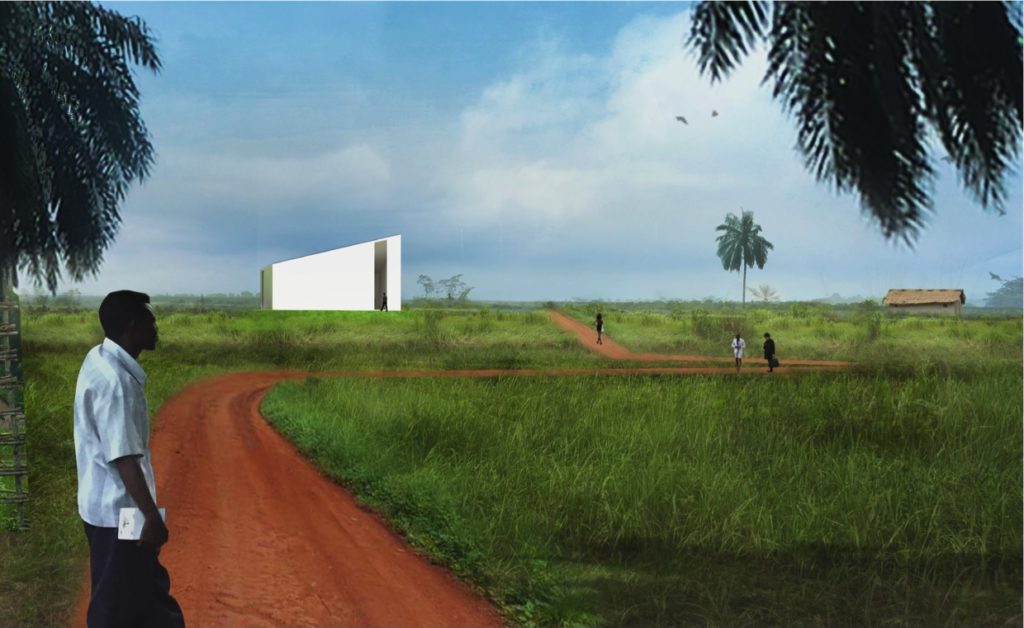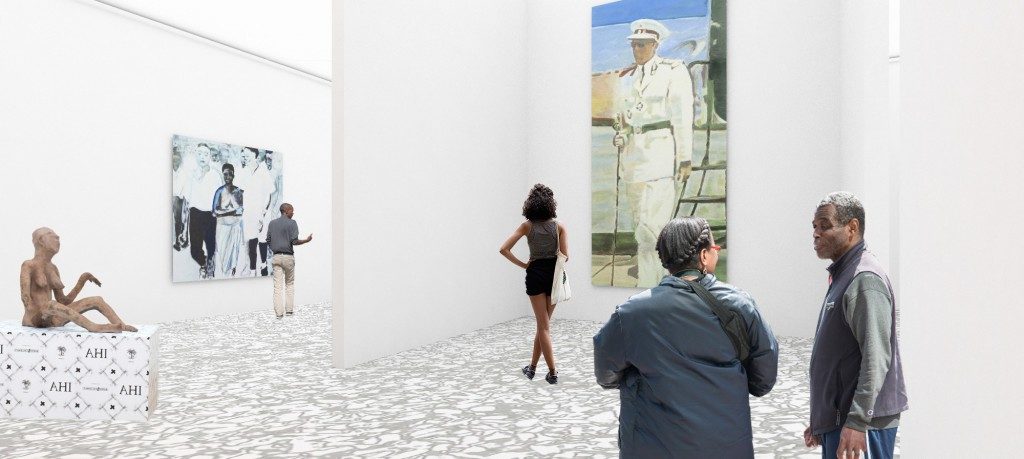Art & Exhibitions
An OMA-Designed Museum With Subversive Goals Opens on a ‘Post-Plantation’ in DR Congo
The community-run space aims to redress the economic effects of colonialism in the global south through art.

The community-run space aims to redress the economic effects of colonialism in the global south through art.

Alyssa Buffenstein

An art space with disruptive intentions, designed by the Office for Metropolitan Architecture, opened over the weekend at the Lusanga International Research Centre for Art and Economic Inequality (LIRCAEI), on a former Unilever plantation in the Democratic Republic of Congo.
With an inaugural exhibition titled “The Repatriation of the White Cube,” the institution’s first show features work both by European artists—including Kader Attia, Marlene Dumas, Carsten Höller, and Luc Tuymans—as well as Congolese artists such as Sammy Baloji and Jean Katambayi.
Also featured are pieces by the Congolese Plantation Workers Art League (CATPC), a collective founded in 2014 of former plantation workers who have been trained by artists to create figurative sculptures made from cacao from African plantations.
The Lusanga research center itself is in fact a joint effort of the CATPC and artist Renzo Martens’s Institute for Human Activities (IHA).
Their works have previously been shown at New York’s SculptureCenter and Berlin’s KOW gallery, besides making appearances at art fairs like Art Cologne in 2015 and the 2017 edition of the Armory Show. The collective is represented by KOW in Berlin and Fons Welters in Amsterdam, and have recently expanded to making drawings, videos, and performances.

LIRCAEI Interior Rendering. Image ©OMA / Courtesy of LIRCAEI and OMA.
All proceeds from the sales of the artworks in the commercial galleries, about €50,000 so far, are reinvested into buying land and materials for community-owned cocoa and palm oil gardens. With the opening of the white cube space this past weekend, the LIRCAEI also begins a five-year research program that will solidify the economic model of what it dubs the “post-plantation.” Its aim is to create a model that can later be implemented elsewhere in the Democratic Republic of the Congo.
“In economic terms, plantations have funded not just the building of most European and American infrastructure and industries, but also that of museums and universities,” reads the LIRCAEI’s website.
In an effort to redress this colonial trauma, the initiative aims to create a new channel that will funnel money from the European and American art market back into the hands of Congolese workers and artists. The center’s white cube design, and its ties to internationally renowned western artists, are intended to attract capital and visibility, a press release explains.
Artists of the CATPC include Michel Ekeba, Eleonore Hellio, Irene Kanga, Mathieu Kasiama, Jean Kawata, Mbuku Kimpala, Thomas Leba, Jeremie Mabiala, Daniel Manenga, Mega Mingiedi, Emery Mohamba, and Cedrick Tamasala.